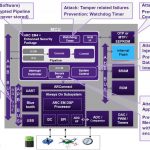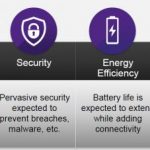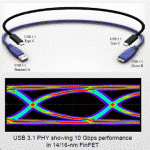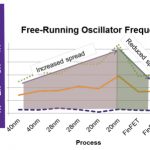In the 1990’s, designing for performance was the main challenge and the marketing message for Intel processors was limited to the core frequency. Then designers had to optimize power consumption to target mobile phones/smartphone and build power efficient SoC, low power but high performance devices. Now in 2015 the semi industry… Read More
IoT need Low-cost, Low-power…and Silicon Proven IP
Today, IoT devices are available in our daily life through wearable, smart appliances or metering application and some prediction call for 33 billion connected objects, 25 billion being IoT by 2020 (Gartner, 2014). Being very synthetic, IoT device (smart appliance or wearable object) will be wirelessly and securely connected… Read More
We’re Number Two, We Try Harder
One of the big surprises I got at Synopsys’ ARC conference is that ARC is #2 in terms of share of licensed microprocessor shipments. I think most readers of Semiwiki would know ARM is #1 but would guess that MIPS (now owned by Imagination Technologies) is #2. But you’d be wrong, ARC is over twice as big.
Last week Synopsys… Read More
Synopsys Q3 Results
Synopsys announced their quarterly results this afternoon. It is the end of their Q3 (yes, they are not on the regular calendar year. Neither, for that matter, is Mentor who announce tomorrow). On the earnings call Aart started off:Good afternoon. I’m happy to report that our third quarter results were very strong, as we achieved… Read More
John Koeter: How To Be #1 in Interface IP
John Koeter is in charge of marketing Synopsys’ IP and prototyping solutions. I talked to him last week.
He grew up in upstate New York, son of a Scottish mother and a Dutch father who immigrated to the US, so he is first generation American, unlike everyone else I’ve interviewed so far for this series who were born overseas.… Read More
I want to use USB Type C (and I want it now)
USB is certainly the most ubiquitous of the Interface protocols, used in our day to day life to connect multiple systems, as well as in professional segments like industrial or even high performance servers (yes, these systems integrates USB 3 connections). But USB is also one of the protocols able to generate frustration every… Read More
Synopsys Buys Bluetooth IP
There is obviously a broad spectrum of semiconductor IP but broadly speaking it seems to fall into three buckets:
- foundation IP: standard cells, memories
- microprocessors and associated peripherals
- interface IP
Foundation IP is where it all started. When I was at Compass Design Automation in the 1990s that was pretty much what… Read More
Why Automotive IP Portfolio is not just IP
Synopsys is launching a broad IP portfolio to support SoC development dedicated to emerging automotive complexes functions, like Driver Assistance (ADAS), Driver Information, Vehicle Network or Infotainment. I was never involved into IC design for Automotive, but I have designed ASIC for avionics (CFM56 motor control) or… Read More
Synopsys Aquires Security IP Company Elliptic
On Monday Synopsys announced that it was acquiring Elliptic Technologies. They have one of the largest portfolios of security IP consisting of both semiconductor IP blocks and software. Increasingly, security requires a multi-layer approach involving both secure blocks on the chip and a software stack on top of that.
Elliptic’s… Read More
Synopsy Eats Their Own Dogfood
One of the most interesting presentations that I went to was the last presentation at the Synopsys Custom Lunch (no, the lunch wasn’t custom, we all got the same, but the presentations were about custom design). Since the last presentation was by Synopsys themselves and not by a customer, it wouldn’t seem promising that it could … Read More











